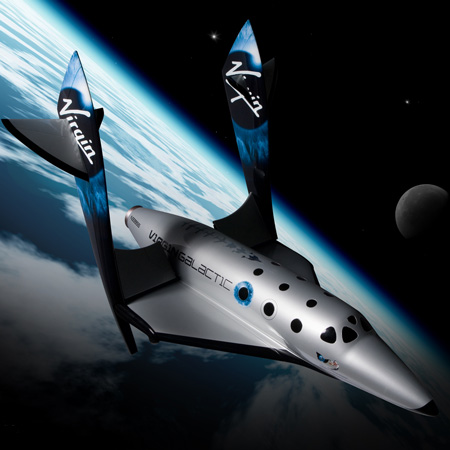
Space tourism company Virgin Galactic has unveiled the design of SpaceShipTwo, a craft that will carry eight passengers on short space flights.
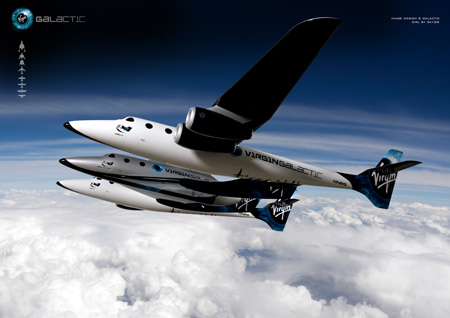
When commercial flights start from Virgin Galactic’s New Mexico Spaceport, the craft will be carried to sub-orbital flight on a carrier aircraft called White Knight Two (above).
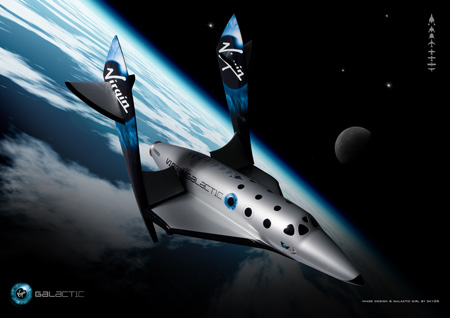
Info from Virgin Galactic:
–
VIRGIN GALACTIC HERALDS ‘THE YEAR OF THE SPACESHIP’ WITH THE UNVEILING OF THE DESIGNS OF SPACESHIPTWO AND WHITE KNIGHT TWO
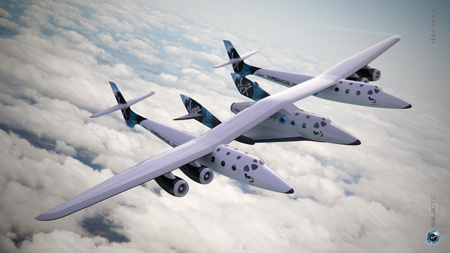
New York, New York, 23rd January 2008: Virgin Galactic today unveiled the design of its new, environmentally benign, space launch system based on the X Prize winning technology of SpaceShipOne, which successfully flew into space for the third time in October 2004 and won the $10m Ansari X Prize.
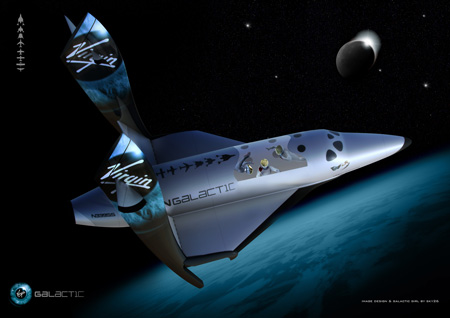
The construction of the White Knight Two (WK2) mothership, or carrier aircraft, is now very close to completion at Scaled Composites in Mojave, CA and is expected to begin flight testing in the summer of 2008. It is the world’s largest, all carbon composite aircraft; it has a unique high altitude lift capacity, capable of launching SpaceShipTwo and its eight astronauts into sub-orbital space flight.
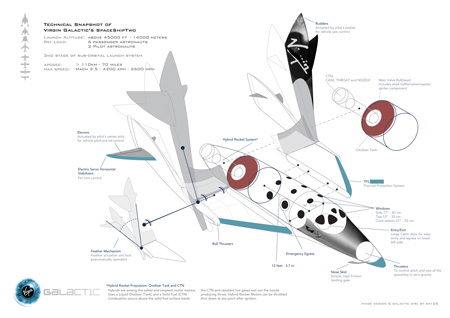
The WK2 mothership is powered by four Pratt and Whitney PW308A engines which are amongst the most powerful, economic and efficient engines available. The WK2 mothership has also been designed to be capable of lifting other payload and launching it into space. Both Scaled Composites and Virgin Galactic believe the system has sufficient lifting capability to launch unmanned vehicles designed to carry small satellites and other scientific payload into low earth orbit. While the first priority for Virgin Galactic is developing the market for human spaceflight, the Company is already assessing the potential for unmanned launch capability.
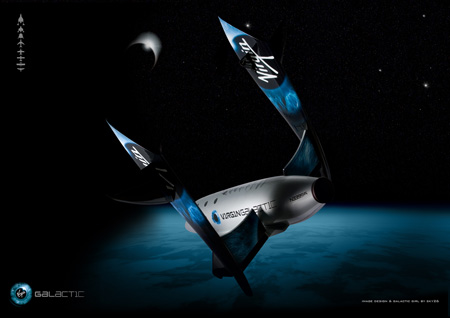
SpaceShipTwo is now nearly 60% complete. It incorporates both the lessons learned from the SpaceShipOne program and the market research conducted by Virgin Galactic into the requirements future astronauts have for their space flight experience. It also has built-in flexibility to encompass future requirements for other scientific and commercial applications.
Whilst the two vehicles comprising the space launch system have been under construction, Virgin Galactic’s cadre of future astronauts has continued to grow strongly to well in excess of 200 individuals with around 85,000 registrations of interest to fly. The deposit base now exceeds $30m representing more than $45m of future income to the fledgling spaceline.
Astronaut orientation for spaceflight is progressing well and already 80 of SpaceShipTwo’s first passengers have been through medical assessment and centrifuge training at the NASTAR facility in Philadelphia. During their G Force acclimatization program, the participants were spun to 3.5GZ (head to toe) and 6GX (front to back) to simulate the actual flight profile of SpaceShipTwo during a 110km (68 miles) apogee sub-orbital space flight.
No comments:
Post a Comment